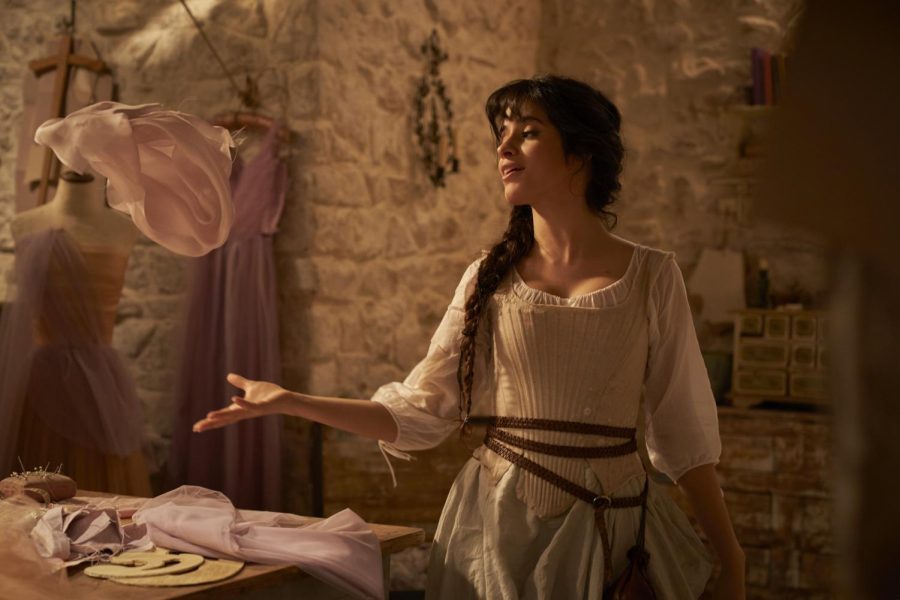Review: ‘Cinderella’ flounders in its lack of originality
The second live-action rendition of Cinderella in the past decade fails to justify why the story was worth remaking.
Camila Cabello makes her acting debut as the titular character in the latest adaptation of the classic fairy tale “Cinderella.” Unlike previous incarnations, Cabello’s Cinderella is a career-driven independent woman. (Image courtesy of Amazon Studios)
September 29, 2021
“Cinderella,” the classic fairy tale best known from its 1950 animated Disney feature, is a story ripe for a live-action version. However, it has already been told in live action, twice. In 1997, Disney retold the story with a multiracial cast and Brandy as Cinderella. In 2015, the remake featured Lily James in the titular role. So why tell this story yet again? 2021’s “Cinderella” fails to find a justifiable answer to this question.
Singer Camila Cabello, in her first acting role, plays the titular character. In this version, she is living in the basement of her evil stepmother’s house (Idina Menzel) where she divides her time between completing family chores and making dresses in the hopes of opening her own store. That’s right, folks: this Cinderella is an aspiring girlboss. This is the biggest change that this rendition makes to the story and it has a considerable impact on the plot. Like all Cinderella stories, the prince (Nicholas Galitzine) seeks to marry her, but this time she resists because if she becomes queen she wouldn’t be able to be a strong, independent woman. While this is hardly the worst alteration that could have been made to the story, these economic changes feel disingenuous coming from a film released on Amazon, a remorseless champion of capitalism that did massive damage to the film industry in the streaming wars.
Apart from attempting to infuse modern politics into Cinderella, this film shifts the story by making it a musical. Rather than giving the film a contemporary energy, these musical numbers highlight the lack of ideas within. Before meeting Cinderella, Prince Robert moodily sings “Somebody to Love” by Queen to express his desire for love. While on the original version, deep, aching longing can be heard in Freddy Mercury’s voice, the prince just sounds like he’s trying to look pretty while singing. The blatant autotune paired with the bland choreography removes any sense of emotion from the performance. None of the musical numbers paid homage to the creative choreography of Busby Berkeley or Vincente Minnelli showcased in previous versions, which might’ve fooled audiences into thinking the film had some respect for the studio fare that came before. Instead, the cast just stands and throws their hands in the air like they just don’t care. And they probably don’t.
For a version dominated by pre-existing material, “Cinderella” still felt far too long. The 1950 animated film was an example of efficient storytelling at only 74 minutes. Unfortunately, one of this version’s few original aspects is its record length: 113 minutes. I am hardly a stickler about runtimes, but with nothing of note brought to the table, I found myself longing for the two hours of my life that I lost watching this film. Joyless, opportunistic remakes are nothing new these days and will continue to dominate the movie industry as long as they dominate at the box office. Despite the low bar, “Cinderella” falls short.
Contact Sebastian Zufelt at [email protected].
























































































































































